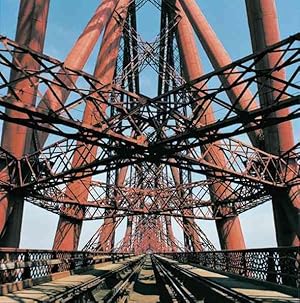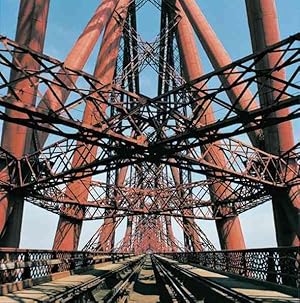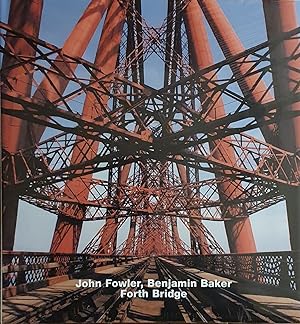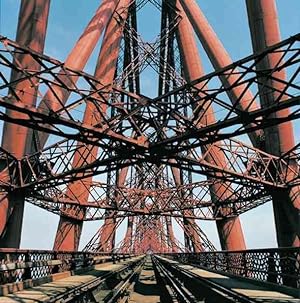Iain Boyd Whyte Angus Macdonald (13 results)
FeedbackSearch filters
Product Type
- All Product Types
- Books (13)
- Magazines & Periodicals (No further results match this refinement)
- Comics (No further results match this refinement)
- Sheet Music (No further results match this refinement)
- Art, Prints & Posters (No further results match this refinement)
- Photographs (No further results match this refinement)
- Maps (No further results match this refinement)
- Manuscripts & Paper Collectibles (No further results match this refinement)
Condition
Binding
- All Bindings
- Hardcover (13)
- Softcover (No further results match this refinement)
Collectible Attributes
- First Edition (1)
- Signed (No further results match this refinement)
- Dust Jacket (2)
- Seller-Supplied Images (7)
- Not Print on Demand (13)
Language (2)
Free Shipping
Seller Location
Seller Rating
-
John Fowler, Benjamin Baker, Forth Bridge: Opus 18
Seller: GlobalGoods By Steve B, Jamaica, NY, U.S.A.
£ 19.22
Convert currency£ 6.72 shipping from U.S.A. to United KingdomQuantity: 1 available
Add to basketHardcover. Condition: Good.
-
John Fowler, Benjamin Baker : Forth Bridge
Seller: GreatBookPricesUK, Woodford Green, United Kingdom
Condition: As New. Unread book in perfect condition.
-
John Fowler, Benjamin Baker. Forth Bridge
Seller: Dereks Transport Books, Ringwood, HAMPS, United Kingdom
First Edition
Hardcover. Condition: Fine. Dust Jacket Condition: Near Fine. 1st Edition. 60pp. 820g. White cloth boards very slightly darkened to bottom edge, FINE in a Near FINE d/w which is a little edge-rubbed. Illustrated with b/w and colour photographs. A detailed look at the design, construction and technology of the bridge, including line drawings, plans and sections.
-
John Fowler, Benjamin Baker : Forth Bridge
Seller: GreatBookPricesUK, Woodford Green, United Kingdom
Condition: New.
-
John Fowler, Benjamin Baker, Forth Bridge
Published by Edition Axel Menges, DE, 1997
ISBN 10: 3930698188 ISBN 13: 9783930698189
Language: English
Seller: Rarewaves.com UK, London, United Kingdom
Hardback. Condition: New. When the Forth Bridge opened on 4 March 1890, it was the longest railway bridge in the world and the first large structure made of steel. Crossing the wide Firth of Forth west of Edinburgh in Scotland, it represents one of the greatest engineering triumphs of Victorian Britain, man's victory over the intractable topography of land and water. Not surprisingly, such a vigorous rebuff of the natural order was condemned at the time by those late Victorians who resisted the march of technology, and William Morris described the Bridge as the "supremest specimen of all ugliness". In response, Benjamin Baker insisted that its beauty lay in its functional elegance. Contrasting the bridge with the only comparable structure of the period, the Eiffel Tower, he concluded: "The Eiffel Tower is a foolish piece of work, ugly, ill-proportioned and of no real use to anyone." But the beauty and fascination of the Forth Bridge lies not simply in its functional performance, but in its scale and power. Over a mile long and higher than the dome of St. Peter's in Rome, it rivals the natural phenomena that the philosophers of the 18th century identified as sources of sublime beauty. Immanuel Kant pointed to hurricanes, boundless oceans and high waterfalls as objects of sublime contemplation, "because they raise the forces of the soul above the heights of the vulgar commonplace, and discover within us a power of resistance of quite another kind, which gives us courage to be able to measure ourselves against the seeming omnipotence of nature". In the 19th century the awe-inspiring feats of nature were rivalled by the inventions of the engineers, and the thrill of the waterfall or the lightning flash was eclipsed by the sight of the roaring locomotive dashing across the majestic span of the Forth Bridge.
-
Benjamin Baker, Forth Bridge
Published by Edition Axel Menges GmbH, 1997
ISBN 10: 3930698188 ISBN 13: 9783930698189
Language: English
Seller: Majestic Books, Hounslow, United Kingdom
Condition: New. pp. 60 50 Illus.
-
John Fowler, Benjamin Baker, Forth Bridge: Opus 18
Seller: Books From California, Simi Valley, CA, U.S.A.
£ 24.27
Convert currency£ 10.83 shipping from U.S.A. to United KingdomQuantity: 1 available
Add to baskethardcover. Condition: New.
-
John Fowler, Benjamin Baker, Forth Bridge
Published by Edition Axel Menges, 1997
Seller: Somerset Books, Glastonbury, United Kingdom
Hardcover. Condition: As New. Dust Jacket Condition: As New. As new / As new Colour, b/w illustrations and line drawings. Sealed in transparent plastic film.
-
£ 26.10
Convert currency£ 14.93 shipping from U.S.A. to United KingdomQuantity: 17 available
Add to basketCondition: As New. Unread book in perfect condition.
-
£ 26.17
Convert currency£ 14.93 shipping from U.S.A. to United KingdomQuantity: 17 available
Add to basketCondition: New.
-
Benjamin Baker, Forth Bridge
Published by Edition Axel Menges GmbH, 1997
ISBN 10: 3930698188 ISBN 13: 9783930698189
Language: English
Seller: Biblios, Frankfurt am main, HESSE, Germany
£ 38.77
Convert currency£ 6.89 shipping from Germany to United KingdomQuantity: 3 available
Add to basketCondition: New. pp. 60.
-
Benjamin Baker, Forth Bridge
Published by Edition Axel Menges GmbH, 1997
ISBN 10: 3930698188 ISBN 13: 9783930698189
Language: English
Seller: Books Puddle, New York, NY, U.S.A.
£ 40.04
Convert currency£ 6.72 shipping from U.S.A. to United KingdomQuantity: 3 available
Add to basketCondition: New. pp. 60.
-
John Fowler, Benjamin Baker, Forth Bridge
Published by Edition Axel Menges, DE, 1997
ISBN 10: 3930698188 ISBN 13: 9783930698189
Language: English
Seller: Rarewaves.com USA, London, LONDO, United Kingdom
Hardback. Condition: New. When the Forth Bridge opened on 4 March 1890, it was the longest railway bridge in the world and the first large structure made of steel. Crossing the wide Firth of Forth west of Edinburgh in Scotland, it represents one of the greatest engineering triumphs of Victorian Britain, man's victory over the intractable topography of land and water. Not surprisingly, such a vigorous rebuff of the natural order was condemned at the time by those late Victorians who resisted the march of technology, and William Morris described the Bridge as the "supremest specimen of all ugliness". In response, Benjamin Baker insisted that its beauty lay in its functional elegance. Contrasting the bridge with the only comparable structure of the period, the Eiffel Tower, he concluded: "The Eiffel Tower is a foolish piece of work, ugly, ill-proportioned and of no real use to anyone." But the beauty and fascination of the Forth Bridge lies not simply in its functional performance, but in its scale and power. Over a mile long and higher than the dome of St. Peter's in Rome, it rivals the natural phenomena that the philosophers of the 18th century identified as sources of sublime beauty. Immanuel Kant pointed to hurricanes, boundless oceans and high waterfalls as objects of sublime contemplation, "because they raise the forces of the soul above the heights of the vulgar commonplace, and discover within us a power of resistance of quite another kind, which gives us courage to be able to measure ourselves against the seeming omnipotence of nature". In the 19th century the awe-inspiring feats of nature were rivalled by the inventions of the engineers, and the thrill of the waterfall or the lightning flash was eclipsed by the sight of the roaring locomotive dashing across the majestic span of the Forth Bridge.









